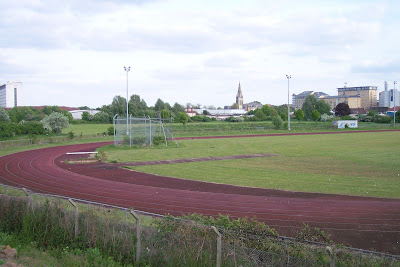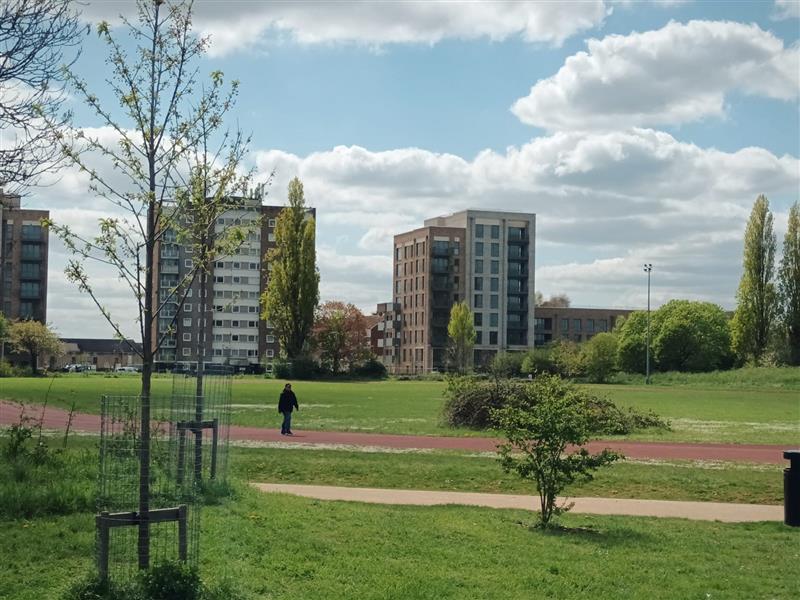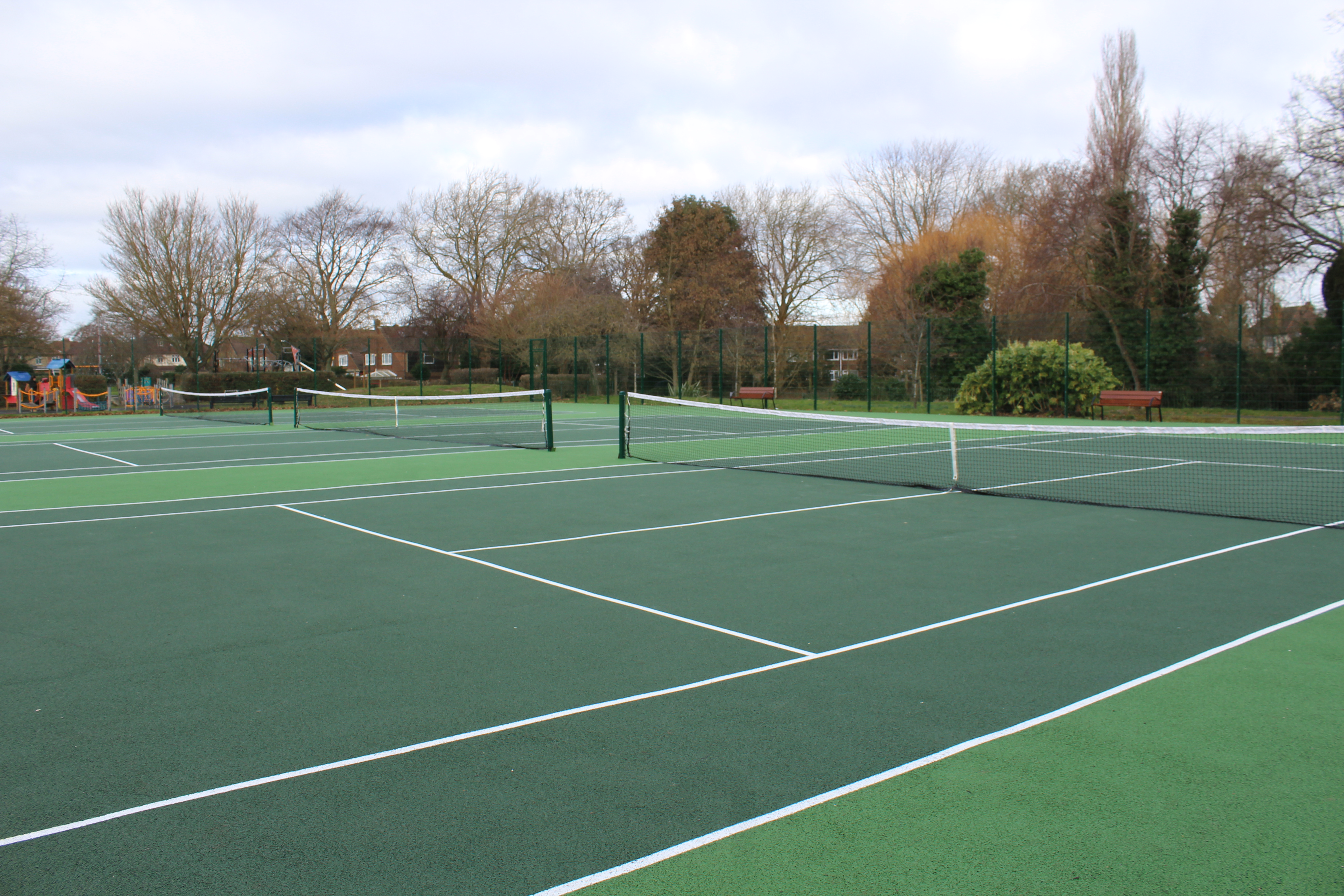Overview
Feltham Park was established in 1938, following its reclamation by Middlesex County Council. At the time, it featured facilities for cricket, tennis, putting greens, and football pitches. The layout we recognise today largely took shape during the 1960s, when the site was further developed as part of wider efforts to enhance green spaces in residential areas. During this period, Feltham Assembly Hall and the athletics track were constructed, and additional tree planting took place across the park.
Feltham Arena Parklands (FAP) refers collectively to Feltham Park, Blenheim Park, Glebelands, Poets Corner and Feltham Arena covering a total area of around 25 hectares.


In August 2016, LUC was appointed to produce a masterplan for Feltham Arena Parklands. Phase 1 was completed in early 2021 and Phase 2 has commenced summer 2025. The long-term vision of the masterplan is to establish the site as a destination space for sports, play, and leisure.
On behalf of the Parks team; LUC and CFP will be contacting organisations and community groups that have an interest in Feltham Arenas Parkland about working together on developing the second phase of this improvement project.
If you wish to represent the views of an organisation in the engagement process for the FAP Phase 2 Masterplan, please provide your details through our Stakeholder Contact Form.
Why should you get involved in Phase 2?
Many of the facilities on site require a comprehensive review of their use and will require significant investment to improve their condition, usability, and long-term sustainability. Which is why Phase 2 focuses on delivering the vision inspired by movement and physical activity through a collaborative design process, working closely with stakeholders and the community to co-design the plans.
Site facilities include:
- Children’s playground
- Running track
- Long jump
- Steeple jump
- Multi-use games area (football, basketball/netball
| - Outdoor gym
- Bike parking
- 9v9 football pitch
- Tennis courts
- A council led cycling hub
- Non turf cricket pitch
|
|
|

Some key areas of focus for Phase 2 are:
- Play and sports provision with facilities aimed for all ages.
- Incorporating design principles to ensure inclusivity and safety.
- Restoring ecosystems to mitigate and adapt to climate change impacts.
- Connectivity to other green spaces and natural areas in Feltham.
- Celebrating the historical and community significance of FAP.
The project team will oversee the delivery of the masterplan and will look to appoint a contractor in summer/autumn 2026
Phase 1 (2016-2021)
Phase 1 developments were completed in early 2021. These improvement works primarily focused on increasing accessibility, improving the site for active travel (walking and cycling), whilst improving safety and the overall look and feel of the parklands.
Previously, the parklands were separate spaces and phase 1 successfully linked all of the sites together by installing 2 new footbridges, creating new pathways/cycleways and improving sightlines.
Further details about what was delivered in Phase 1 can be found by following the links below:
Overview
Feltham Park was established in 1938, following its reclamation by Middlesex County Council. At the time, it featured facilities for cricket, tennis, putting greens, and football pitches. The layout we recognise today largely took shape during the 1960s, when the site was further developed as part of wider efforts to enhance green spaces in residential areas. During this period, Feltham Assembly Hall and the athletics track were constructed, and additional tree planting took place across the park.
Feltham Arena Parklands (FAP) refers collectively to Feltham Park, Blenheim Park, Glebelands, Poets Corner and Feltham Arena covering a total area of around 25 hectares.


In August 2016, LUC was appointed to produce a masterplan for Feltham Arena Parklands. Phase 1 was completed in early 2021 and Phase 2 has commenced summer 2025. The long-term vision of the masterplan is to establish the site as a destination space for sports, play, and leisure.
On behalf of the Parks team; LUC and CFP will be contacting organisations and community groups that have an interest in Feltham Arenas Parkland about working together on developing the second phase of this improvement project.
If you wish to represent the views of an organisation in the engagement process for the FAP Phase 2 Masterplan, please provide your details through our Stakeholder Contact Form.
Why should you get involved in Phase 2?
Many of the facilities on site require a comprehensive review of their use and will require significant investment to improve their condition, usability, and long-term sustainability. Which is why Phase 2 focuses on delivering the vision inspired by movement and physical activity through a collaborative design process, working closely with stakeholders and the community to co-design the plans.
Site facilities include:
- Children’s playground
- Running track
- Long jump
- Steeple jump
- Multi-use games area (football, basketball/netball
| - Outdoor gym
- Bike parking
- 9v9 football pitch
- Tennis courts
- A council led cycling hub
- Non turf cricket pitch
|
|
|

Some key areas of focus for Phase 2 are:
- Play and sports provision with facilities aimed for all ages.
- Incorporating design principles to ensure inclusivity and safety.
- Restoring ecosystems to mitigate and adapt to climate change impacts.
- Connectivity to other green spaces and natural areas in Feltham.
- Celebrating the historical and community significance of FAP.
The project team will oversee the delivery of the masterplan and will look to appoint a contractor in summer/autumn 2026
Phase 1 (2016-2021)
Phase 1 developments were completed in early 2021. These improvement works primarily focused on increasing accessibility, improving the site for active travel (walking and cycling), whilst improving safety and the overall look and feel of the parklands.
Previously, the parklands were separate spaces and phase 1 successfully linked all of the sites together by installing 2 new footbridges, creating new pathways/cycleways and improving sightlines.
Further details about what was delivered in Phase 1 can be found by following the links below:





